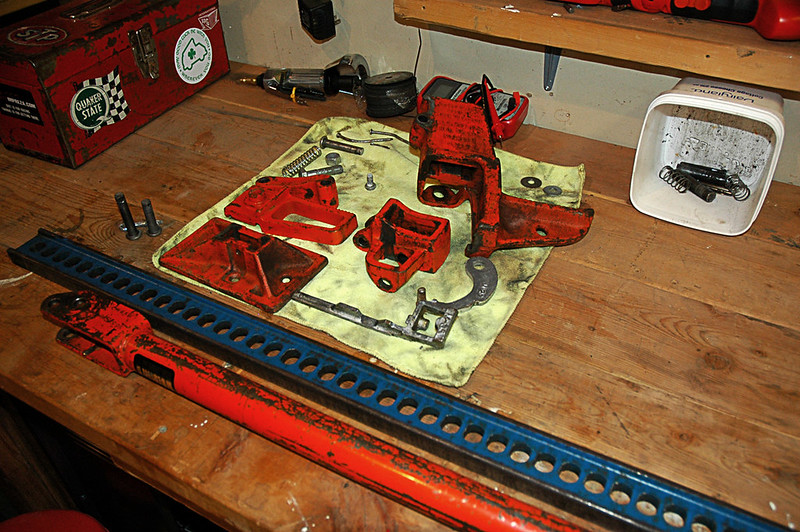
Influencer II

Influencer II

Off-Road Ranger I

Pathfinder II

Influencer II

Influencer II
I wonder if a dedicated trail repair/recovery forum would be a good idea?This is where we need a recovery training day.


Influencer II

Pathfinder III

Influencer II
What is a tube adapter?My Three most used Hi-lift attachments are wheel adapter, tube adapter and stable base. Like everyone else said before it is a dangerous piece of equipment so give it respect and learn how to use it But Don't be afraid of it.

Influencer II
I've also been looking at farm jacks at Farm and Fleet. Are they all pretty much the same thing?Cleaned up my trusty Jack-all that was passed to me from my Dad back when I got my first 4x4;
I remember his words everytime I get it out; "Stay clear, this jack doesn't care about you."
It lives in the back under the canopy out of the way. There aren't many points on our current truck to use it as a lift, but I've got chains and gear to use it for recovery if I needed to.

Pathfinder II

Influencer II
Oh sweet! Thanks for posting this. I was wondering how safe this would be to use on my tubular sliders. This helps me out tremendously.

Influencer II
Thanks for the video. Good info.@ShawnR On Youtube, there's a great video by Ronny Dahl. He explains them very well. (I'm new to them as well) Super dangerous. I've likened them on this forum to a Spanish Inquisition device.
Man do I miss Farm and Fleet! There is nothing comparable on the west coast. Now I'm home sick.I've also been looking at farm jacks at Farm and Fleet. Are they all pretty much the same thing?
Farm and Fleet? You grew up in/near SE Wisconsin didn't you?Man do I miss Farm and Fleet! There is nothing comparable on the west coast. Now I'm home sick.
